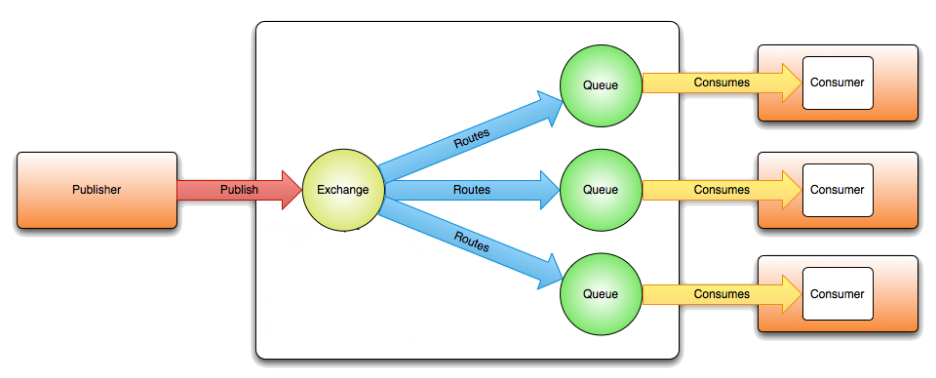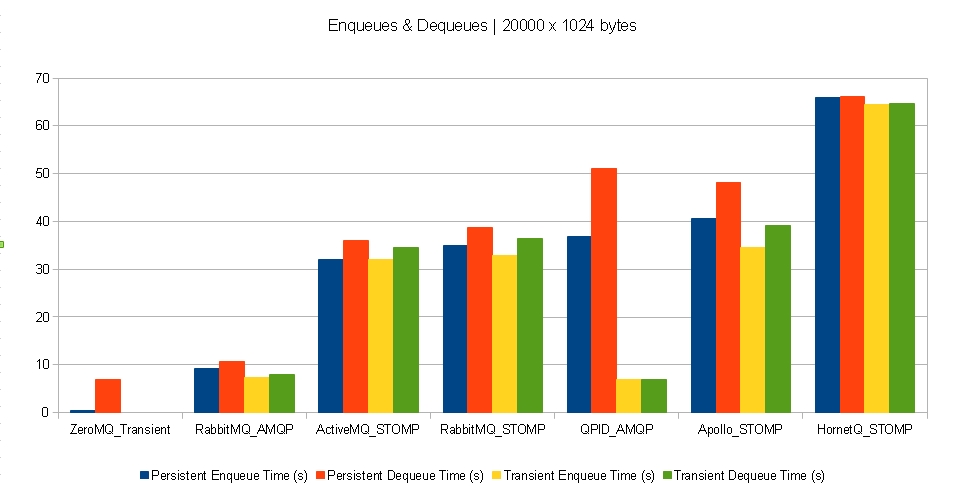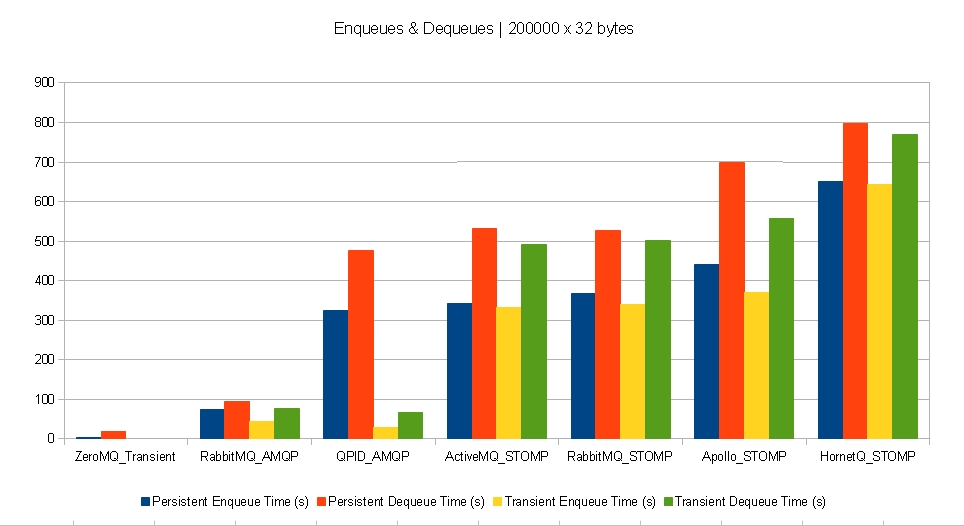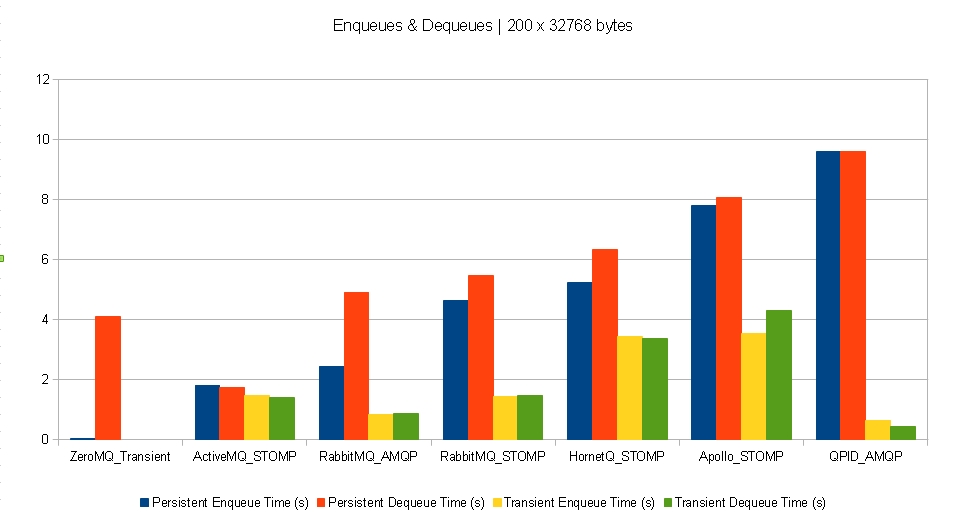

Messaging Systems
Messaging makes applications loosely coupled by communicating asynchronously, which also makes the communication more reliable because the two applications do not have to be running at the same time.
Why Messaging?
Performance
improve response times by doing some tasks asynchronously
Why Messaging?
Decoupling
reduce complexity by decoupling and isolating applications
Why Messaging?
Scalability
build smaller apps that are easier to develop, debug, test, and scale
distribute tasks across machines based on load
Why Messaging?
High-quality, cost-effective
build multiple apps, using the most suitable language or framework for each, versus one big monolithic app
Why Messaging?
High availability
get robustness and reliability through message queue persistence
potentially get zero-downtime redeploys
Messaging Patterns
Routing schemes: multicast, broadcast, PointToPoint
Message store (persistent, transient)
Message transformation
Message-Oriented Middleware
infrastructure supporting sending and receiving messages between distributed systems
message transfer agent = broker
standard protocols and APIs
Java Message Service
standard messaging API for Java platform
robust, flexible
cross platforms interoperability is possible, but ...
is restrictive, limited, and forces vendor lock-in.
Implementations: ActiveMQ, HornetQ, Apollo
JMS API
Producer example
import javax.jms.Connection;
import org.apache.activemq.spring.ActiveMQConnectionFactory;
ActiveMQConnectionFactory connectionFactory = new ActiveMQConnectionFactory();
connectionFactory.setBrokerURL("tcp://localhost:61616");
connection = connectionFactory.createConnection();
connection.start();
Session session = connection.createSession(false, Session.AUTO_ACKNOWLEDGE);
Destination destination = session.createTopic("Testtopic");
MessageProducer producer = session.createProducer(destination);
producer.setDeliveryMode(DeliveryMode.NON_PERSISTENT);
String text = "Message String";
TextMessage message = session.createTextMessage(text);
producer.send(message);
session.close();
JMS API
Consumer example
import javax.jms.Connection;
import org.apache.activemq.spring.ActiveMQConnectionFactory;
ActiveMQConnectionFactory connectionFactory = new ActiveMQConnectionFactory();
connectionFactory.setBrokerURL("tcp://localhost:61616");
Connection connection = connectionFactory.createConnection();
connection.start();
Session session = connection.createSession(false, Session.AUTO_ACKNOWLEDGE);
MessageConsumer consumer = session.createConsumer(session.createTopic("Testtopic"));
consumer.setMessageListener(new MessageListener());
Why AMQP?
cross platforms interoperability
open standard protocol, less vendor lock in
efficient binary wire protocol
support in various languages, on most platforms, but ...
scope is too large ...
no interoperability between implementations (0.8, 0.9.1, 0.10, 1.0)
Implementations: Apache Qpid, RabbitMQ, ActiveMQ (>5.8), Apollo
AMQP: message flow

AMQP API
Ruby client - enqueue
require 'amqp'
AMQP.start(:host => 'localhost') do |connection|
AMQP::Channel.new(connection) do |channel, open_ok|
channel.on_error do |channel, channel_close|
puts "Error #{channel_close.reply_code}: #{channel_close.reply_text}"
end
channel.queue('/queue/test_queue', :durable => true) do |queue, declare_ok|
channel.default_exchange.publish 'Message String',
:routing_key => queue.name, :persistent => true
EventMachine.add_timer(0.5) { connection.disconnect { EventMachine.stop } }
end
end
end
AMQP API
Ruby client - dequeue
require 'amqp'
AMQP.start(:host => 'localhost') do |connection|
AMQP::Channel.new(connection) do |channel, open_ok|
channel.on_error(&method(:handle_channel_exception))
channel.queue('/queue/test_queue', :durable => true) do |queue, declare_ok|
queue.subscribe(:ack => true) do |header, message|
puts "Received #{message}"
header.ack
if (message == 'QUIT')
queue.unsubscribe
connection.disconnect { EventMachine.stop }
end
end
end
end
end
Why not STOMP?
Simple/Streaming Text Oriented Messaging Protocol
simple and lightweight (although verbose on the wire)
wide range of language bindings
widely-interoperable, but ...
some features are implementation specific
not straightforward to port code between brokers
Implementations: ActiveMQ, HornetQ, RabbitMQ
STOMP API
Ruby client - enqueue
require 'stomp' client = Stomp::Client.new(:host => 'localhost') client.publish '/queue/test_queue', 'Message String', :persistent => true client.close
STOMP API
Ruby client - dequeue
require 'stomp'
client = Stomp::Client.new(:host => 'localhost')
client.subscribe '/queue/test_queue', :ack => :client do |message|
puts "Received #{message}"
client.acknowledge(message)
client.close if (message == 'QUIT')
end
client.join
Why not brokerless?
ZeroMQ
high performance and throughput oriented messaging middleware
a socket library
transport agnostic sockets: in-process, IPC, multicast, TCP
message oriented
topology aware
30+ languages bindings
ZeroMQ API
Ruby client - push
require 'ffi-rzmq'
context = ZMQ::Context.new 1
sender = context.socket ZMQ::PUSH
sender.connect('tcp://127.0.0.1:5555')
sender.send_string('Message String')
sender.close
ZeroMQ API
Ruby client - pull
require 'ffi-rzmq'
context = ZMQ::Context.new 1
receiver = context.socket ZMQ::PULL
receiver.bind('tcp://127.0.0.1:5555')
message = ''
receiver.recv_string(message)
puts "Received #{message}"
receiver.close
U MOM in the Cloud!
Message Queuing Service
Message-Oriented Middleware deployed in a cloud using Software as a Service model.
SaaS benefits
eliminates the traditional overhead associated with operating in-house messaging infrastructures
provides an internet scale messaging platform
simplifies access to messaging resources
facilitates integration
reduces cost
Distributed solutions in the Cloud (SaaS)
Amazon Simple Queue Service - ASQQ
RoQ - Open Source project backed up by EURA NOVA
CloudAMQP - RabbitMQ as a Service
StormMQ as a Service - AMQP in the Cloud
One size doesn’t fit all

Broker vs Brokerless
Transient vs. Persistent messages
Atomic transactions
Fault-tolerance
Testing framework
brokers: ActiveMQ, Apollo, QPid, RabbitMQ, HornetQ, ZMQ broker
protocols: AMQP, STOMP, socket
different message size: 32b, 1kb, 32kb
in-memory vs. persistent queues (except for ZMQ)
References
Code available on github
More details on Muriel's Tech Blog
Benchmark (i)

Benchmark (ii)

Benchmark (iii)

Functional requirements
sequencing: FIFO mode, total ordering
retry policy: with regular, or exponential delay
priority
LIFO
item expiration
queuing delay
filtering by content
atomic transactions: one, or multiple operations, XA support
asynchronous acknowledgement
dequeue throttling: items/s, bandwith(kb/s), item window size
message properties: size, max throughput, max items
Operational requirements
persistent queues
high availability for queuing
administrative features
Wrap Up
Why Messaging?
Messaging Patterns
Message-Oriented Middleware
JMS
Why AMQP?
Why not STOMP?
U MOM in the Cloud
One size doesn’t fit all
Testing framework - quick benchmark
Match MQ features to requirements